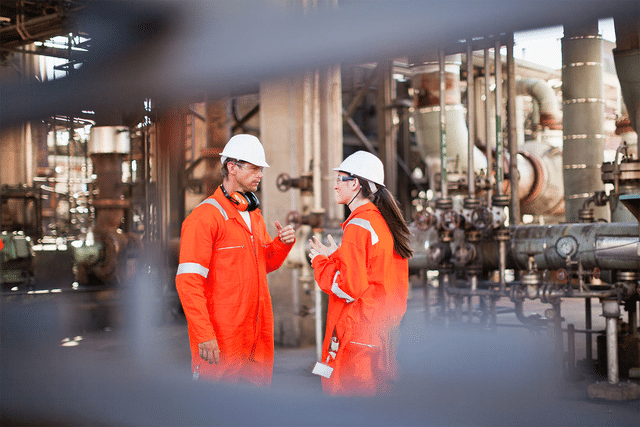
Wearable Technology Can Improve Construction Site Safety
One of the fastest-growing trends in construction site safety is wearable safety technology — small electronic devices, even full-body suits, worn by construction workers as part of their clothing or gear. These high-tech safety wearables can alert construction workers and supervisors to dangerous employee practices or on-site hazards that can lead to costly injuries.
Most people already know about popular wearable safety technology such as iWatch wristbands, which track fitness data. However, smart equipment is also improving safety on construction sites, boosting productivity while reducing the risk of worker injuries.

The global insurance company American International Group (AIG) calls safety wearables a “health and safety game changer" that will transform work environments around the world. The wearables transformation means that construction managers must now persuade workers to accept technology that keeps them safer while also raising privacy concerns. At the same time, companies must find ways to store the expensive wearable technology in the workplace securely.
Is your company prepared for the changes that wearable safety technology are bringing to the job site?
The high cost of Construction worker injury
Industrial Safety & Hygiene News reports that 1 in 10 construction workers are injured on the job every year. Employees suffer back injuries, exposure to harmful fumes, fatigue, sprains and injuries from slips and falls. There are more fatalities, mostly from falls, in construction than in any other industry in the U.S., according to OSHA.
Workers' compensation costs for construction are already double those of other industries, according to the U.S. Bureau of Labor Statistics. One recent survey found that U.S. businesses spend more than $1 billion a week, nearly $60 billion per year, on workers' compensations costs for non-fatal workplace injuries.
wearable technology for construction safety
Construction safety wearables can alert construction workers and supervisors to dangerous employee practices or on-site safety hazards. For example, for improved safety in construction sites, workers can don technology-enabled hardhats that allow a 360° view of surroundings, so they can spot hazards lurking behind them. "Smartcaps" have bands inside the hat that record brain waves to monitor fatigue. Exoskeletons, wearable suits that use electric motors, hydraulics and other technologies to pump up workers' physical abilities for lifting and moving heavy objects, help prevent back and neck injuries.
Popular construction wearables include GPS-enabled vests that alert workers with visual or audio feedback when they enter a predefined hazard zone. To prevent overheating, workers can even switch on personal air conditioning vests that circulate water or cool air over the torso. Belt clip sensors alert supervisors when someone trips, slips or falls, and other monitors track exposure to toxic gas and other hazards.
Workers can also use wearable safety technology such as smart helmets and badges with coded electronic information about each employee's training and certifications, crucial information needed for on-site safety.

Who uses wearable safety technology in Construction?
Large contractors lead the way in adopting wearable safety technology, with 21 percent using the devices, according to a 2017 survey conducted by Dodge Data & Analytics. Overall, 13 percent of contractors surveyed reported using safety wearables. Around 82 percent of respondents reported that using wearable devices has a "positive impact on safety" on construction sites.
Managing safety wearables and workers
Implementing a wearables program for construction sites necessitates adjustments from workers and supervisors. Everyone will need training to use the devices, and managers must learn how to monitor worker usage. Managers may have to address privacy concerns of wearable safety technology if some workers don't like being closely monitored. Emphasizing the enhanced benefits of wearables may help override those concerns through the process of improving safety in construction sites.
Here at PODS, we understand that construction projects change and evolve. That's why construction safety wearables can be organized and stored in our weather-resistant mobile storage containers for easy access at one or multiple job sites. PODS can drop off containers, and once loaded with your safety wearables, we can pick them up and deliver them to a new location, suiting each project's needs.
Safety Wearables impact bottom line
Using wearables for safety on construction sites can lead to fewer accidents and workers' compensation claims, lowering insurance premiums. On-site safety measures and wearble safety technology also result in higher productivity, better employee morale and lower turnover, factors that make any project more profitable. When construction wearable safety technology is combined with other commercial solutions, such as on-site storage, construction projects can be completed according to timeline and without injury.
[maxbutton id="1"]
Comments
Leave a Comment
Your email address will not be published. Required fields are marked *
